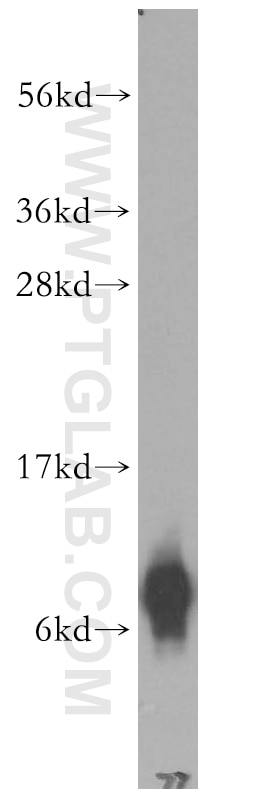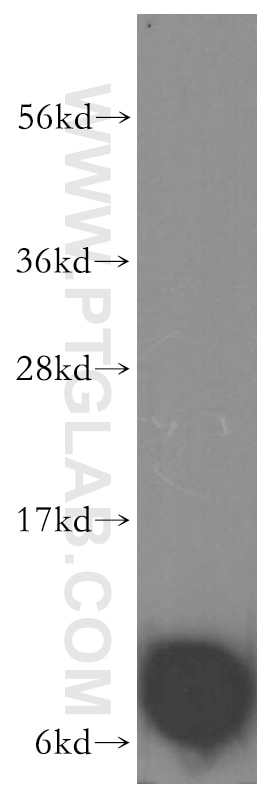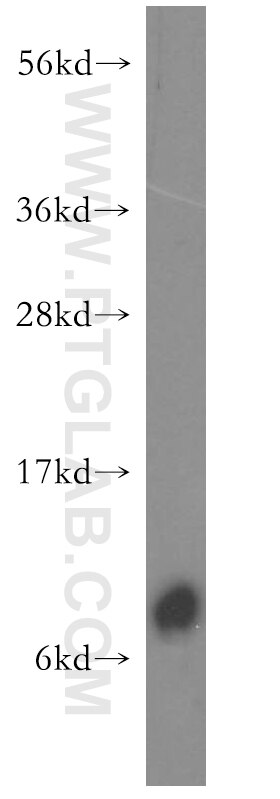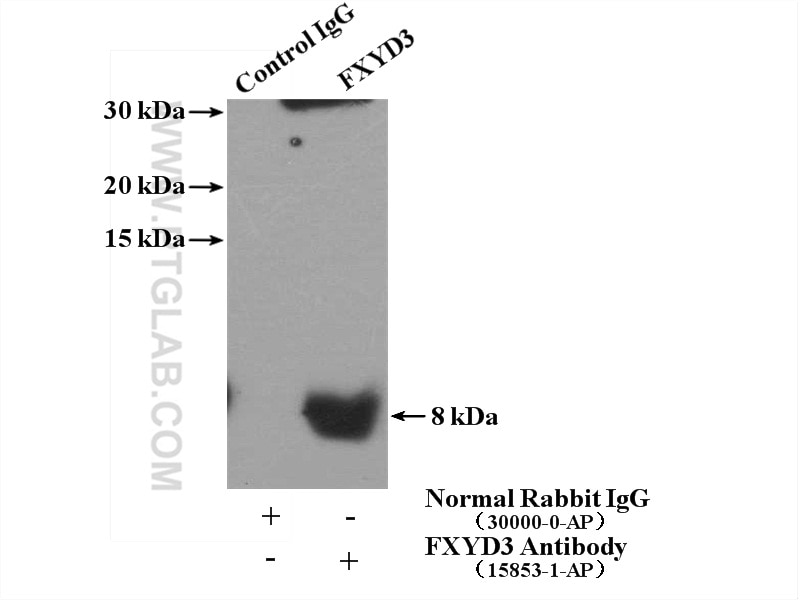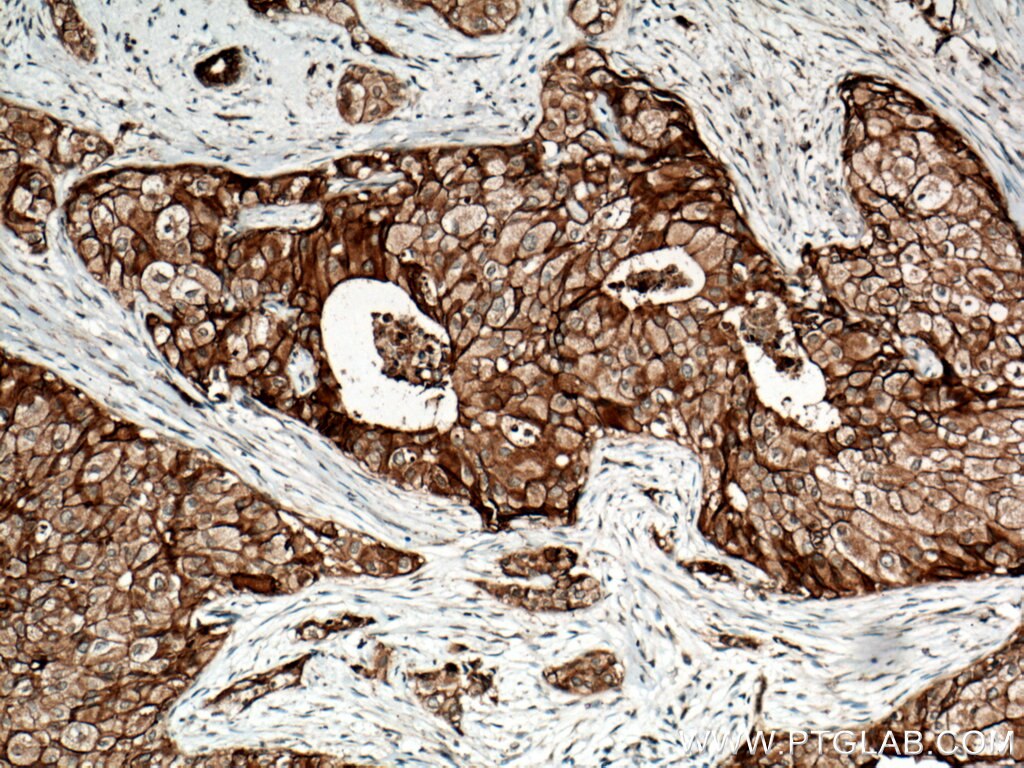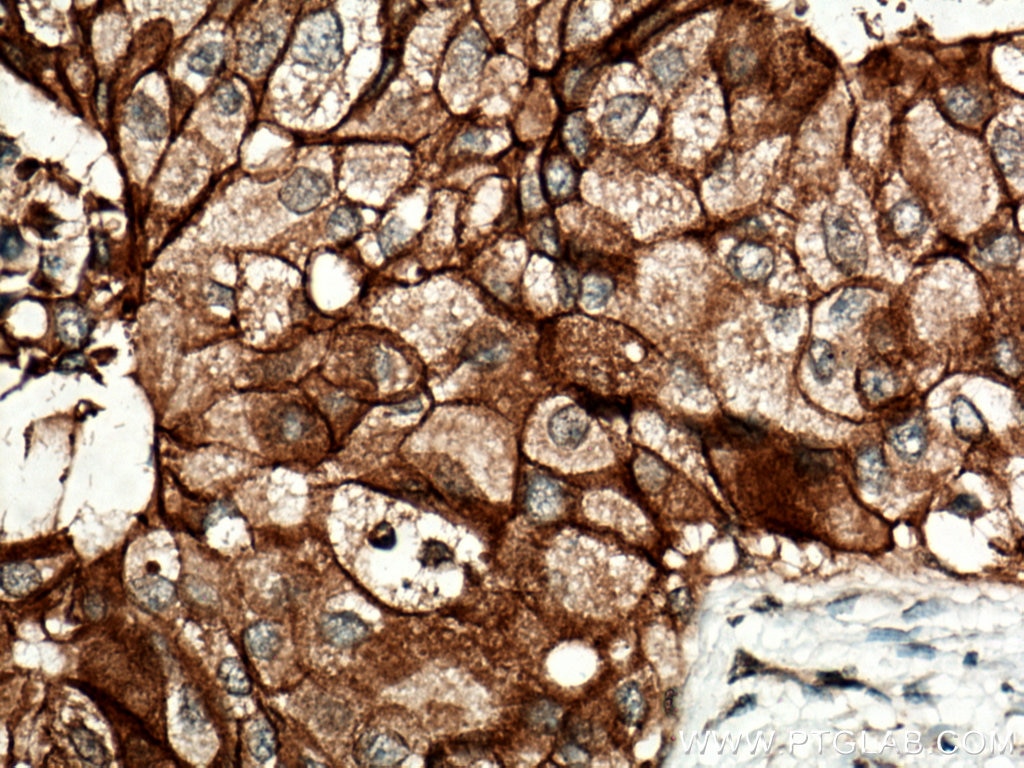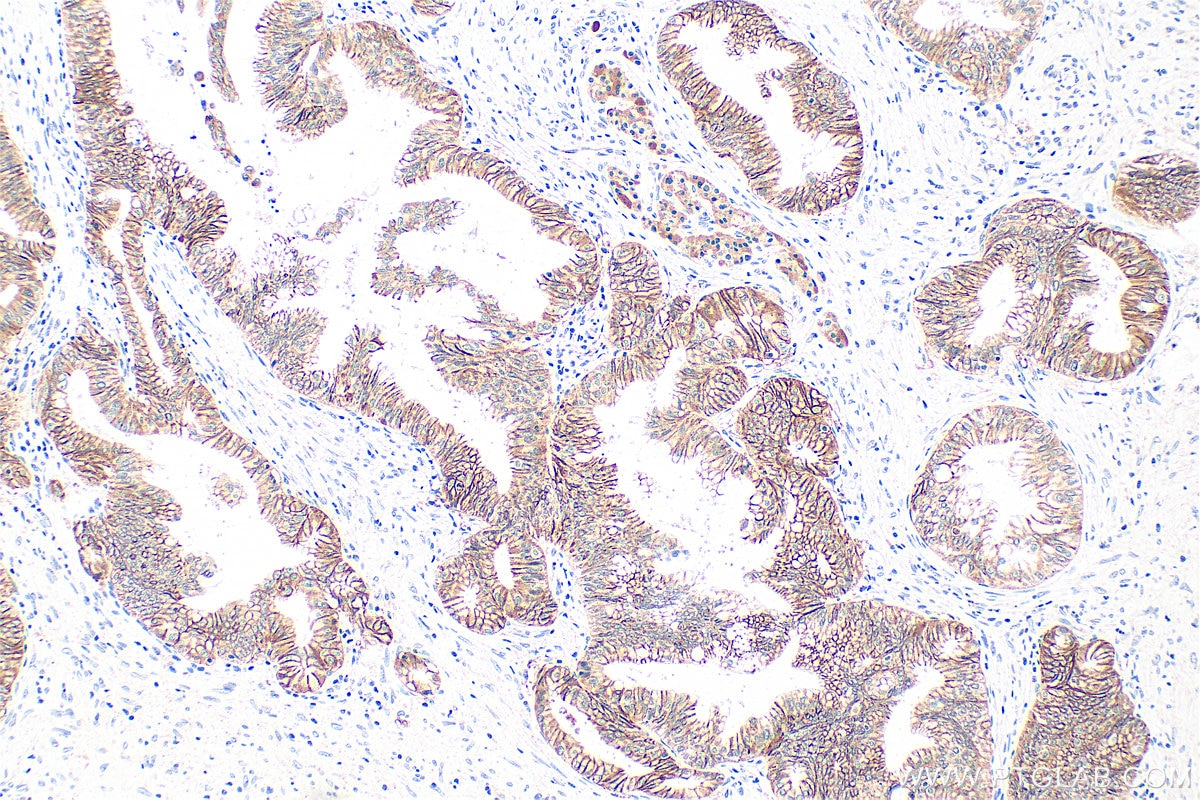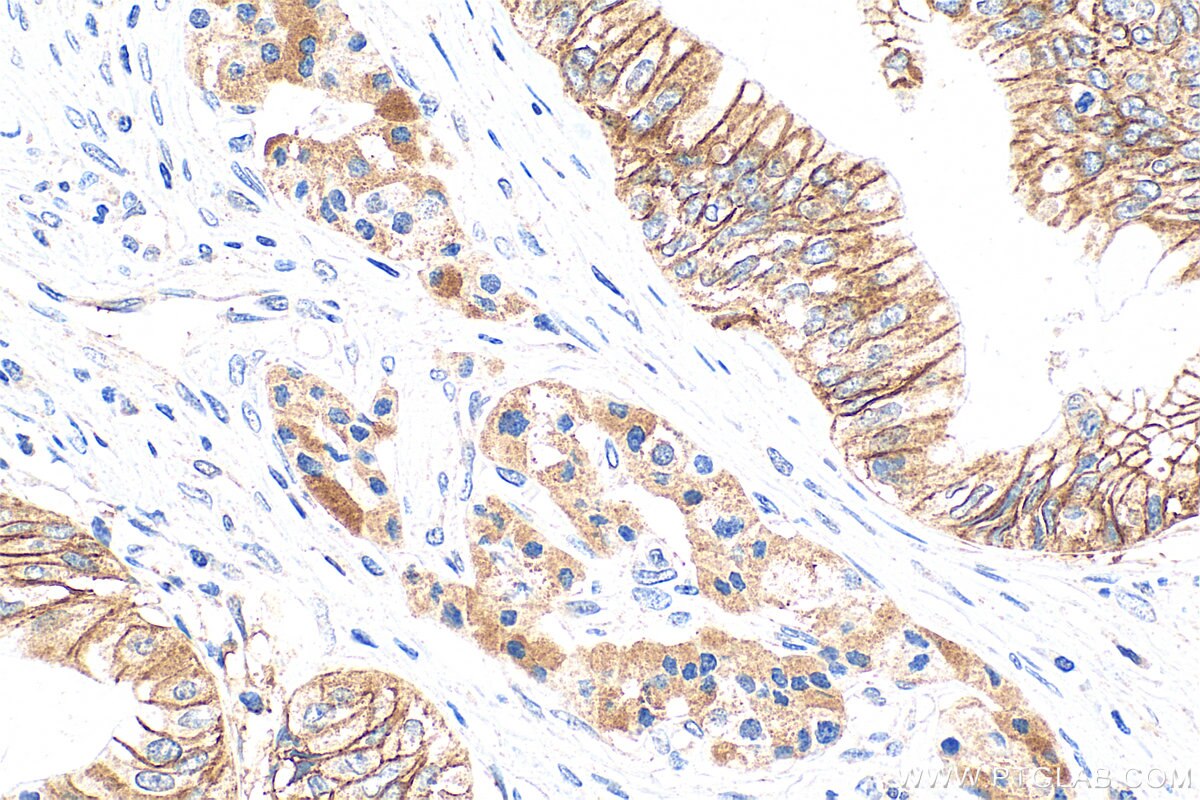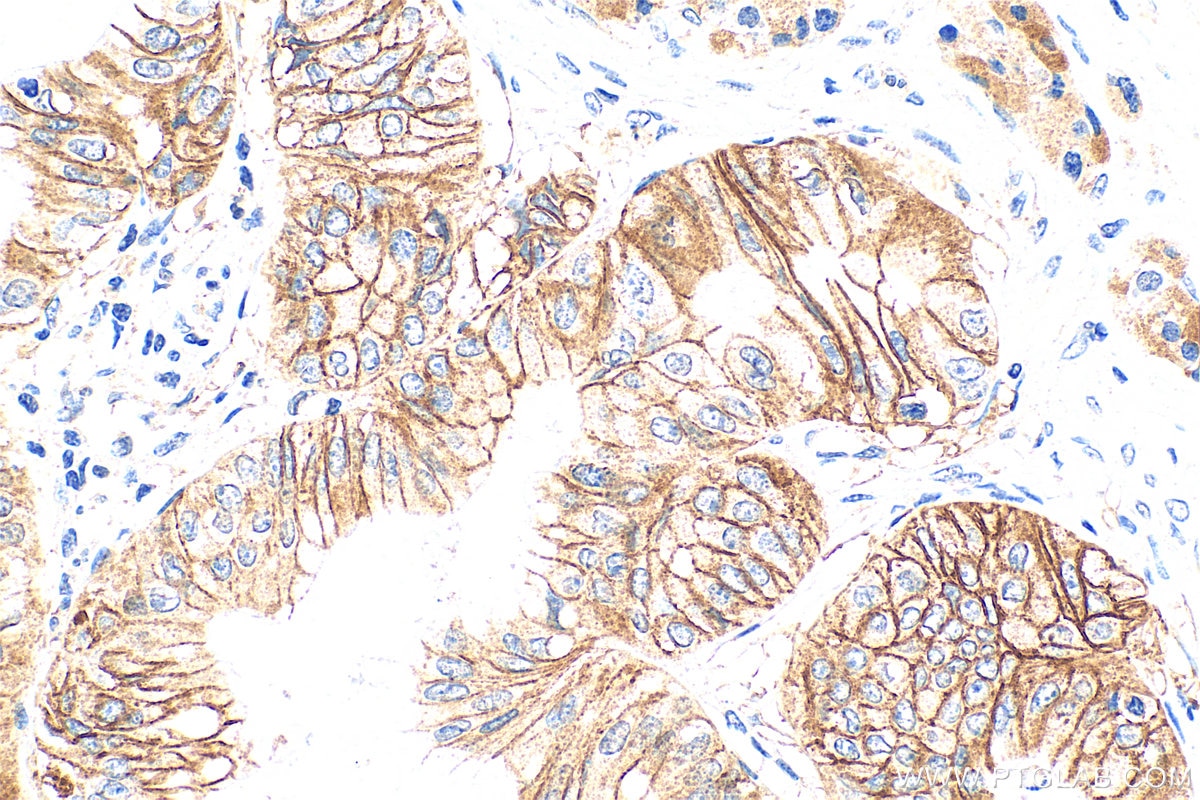Validation Data Gallery
Tested Applications
| Positive WB detected in | COLO 320 cells, A375 cells, SGC-7901 cells |
| Positive IP detected in | COLO 320 cells |
| Positive IHC detected in | human breast cancer tissue, human pancreas cancer tissue Note: suggested antigen retrieval with TE buffer pH 9.0; (*) Alternatively, antigen retrieval may be performed with citrate buffer pH 6.0 |
Recommended dilution
| Application | Dilution |
|---|---|
| Western Blot (WB) | WB : 1:500-1:2000 |
| Immunoprecipitation (IP) | IP : 0.5-4.0 ug for 1.0-3.0 mg of total protein lysate |
| Immunohistochemistry (IHC) | IHC : 1:50-1:500 |
| It is recommended that this reagent should be titrated in each testing system to obtain optimal results. | |
| Sample-dependent, Check data in validation data gallery. | |
Product Information
15853-1-AP targets FXYD3 in WB, IHC, IP, ELISA applications and shows reactivity with human, mouse, rat samples.
| Tested Reactivity | human, mouse, rat |
| Host / Isotype | Rabbit / IgG |
| Class | Polyclonal |
| Type | Antibody |
| Immunogen | FXYD3 fusion protein Ag8672 相同性解析による交差性が予測される生物種 |
| Full Name | FXYD domain containing ion transport regulator 3 |
| Calculated molecular weight | 87 aa, 9 kDa |
| Observed molecular weight | 8 kDa |
| GenBank accession number | BC005238 |
| Gene Symbol | FXYD3 |
| Gene ID (NCBI) | 5349 |
| RRID | AB_2108602 |
| Conjugate | Unconjugated |
| Form | Liquid |
| Purification Method | Antigen affinity purification |
| UNIPROT ID | Q14802 |
| Storage Buffer | PBS with 0.02% sodium azide and 50% glycerol , pH 7.3 |
| Storage Conditions | Store at -20°C. Stable for one year after shipment. Aliquoting is unnecessary for -20oC storage. |
Protocols
| Product Specific Protocols | |
|---|---|
| WB protocol for FXYD3 antibody 15853-1-AP | Download protocol |
| IHC protocol for FXYD3 antibody 15853-1-AP | Download protocol |
| IP protocol for FXYD3 antibody 15853-1-AP | Download protocol |
| Standard Protocols | |
|---|---|
| Click here to view our Standard Protocols |
